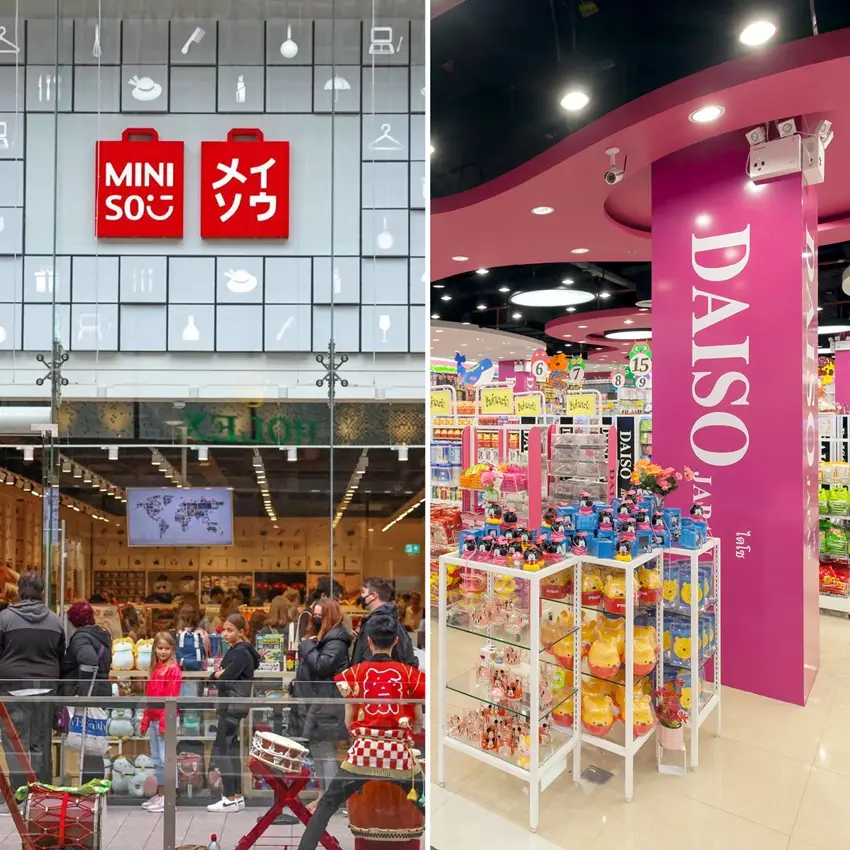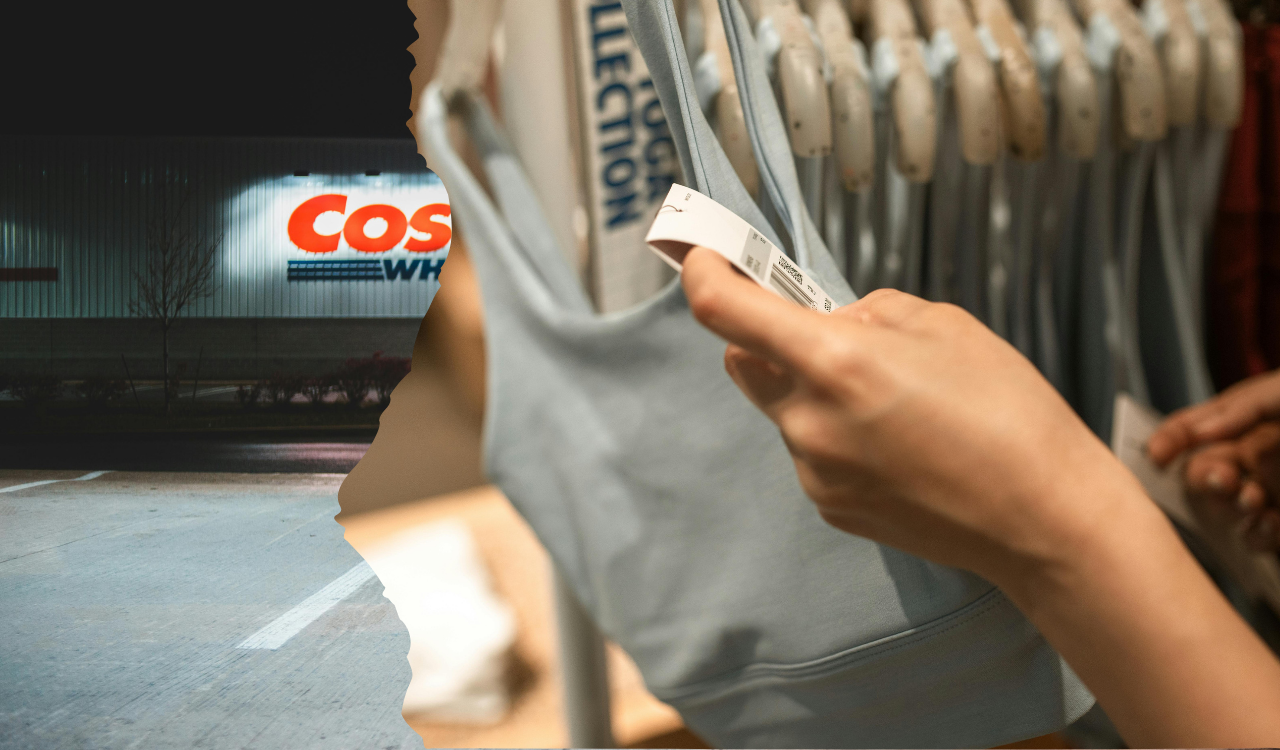The urban legend in the retailing business is that the precious space surrounding checkout lanes and around cash registers represent the most productive sales-per-square-inch territory in a store. So, imagine if you took that concept of impulse-driven buying and made a whole store that way?
Okay, that’s a great idea still waiting to be launched. But pay attention to Miniso and Daiso, two chains out of Asia that have entered the American market and have big expansion plans. What’s clear after visiting these stores is that each in its own way is reinventing the tried-and-true dollar store business model in ways that are creating one of the newest retail concepts in the business. Each stays away from basics and household consumables and focuses on impulse purchases like snacks, toys, gimmick items and decorating doodads.
The Asian Invasion is on and it’s big. You may not have heard of either of these brands, much less visited them…and while they are not direct competitors to each other, there is enough overlap to consider them both serious entries onto the retail landscape representing a brand-new format.
The Asian Invasion is on and it’s big. You may not have heard of either of these brands, much less visited them, as their U.S. penetration is still relatively small compared to the 15,000 storefronts that Dollar General and Dollar Tree/Family Dollar operate – EACH. And while they are not direct competitors to each other, there is enough overlap to consider them both serious entries onto the retail landscape representing a brand-new format. And in these days of overstoring and intense competition that’s saying something.
Miniso
Chinese-based and relatively new to the retail world (having started in 2013), Miniso arrived in North America in April 2017 with two stores, in Pasadena, CA and Vancouver, Canada. Last October it unveiled what it calls its “$10 N’ Under” concept which keeps virtually all its merchandise below that pricing threshold.
Since opening those initial stores, Miniso has expanded to about 110 stores in North America with about half of them in the U.S. and the rest in Canada. Its American stores are heavily concentrated in California, with 30 locations in the state. However, it clearly is looking for a national footprint and this past February it hit the New York market with what it calls its “Flagship” on Broadway in the Soho neighborhood.
“Miniso has made the region (North America) a priority by extending our reach and accelerating localization,” said Bella Tu, general manager of the company’s overseas division. Tu added, “The brand is actively expanding eastwards. Our Soho flagship store in New York was a milestone in this strategic adjustment.”
The company differentiates itself from traditional dollar stores in a number of ways, it told The Robin Report. “Miniso’s strength lies in its original and localized designs,” a company spokesperson said. “North American consumers want products that provide value, are well-designed and are of good quality.” The retailer’s Miniso Design Academy is made up of designers from Finland, Denmark, Spain, Korea and other parts of the world and “it localizes its products by collaborating with renowned local IP license-holders to release co-branded products.”
Indeed, a recent walk-through of the Soho store showed a wide variety of goods, with special emphasis on toys, housewares and home décor accessories. Many feature well-known Western brands like Disney, Black & Decker, Sharper Image and Marvel. Merchandise is shown on a variety of fixtures and not generally segmented into like departments. It takes the treasure hunt experience that is a foundation of some dollar stores up several levels. The mix of shoppers that day, skewed towards younger customers, were clearly buying into –and buying up – Miniso’s offerings.
The store also features several “experience” areas, which it says are another key to its strategy. “Miniso places an emphasis on the shopping experience, a feature that’s less important for a traditional dollar store. For instance, 40 percent of the floor space at our New York flagship store is an experience zone where customers may take selfies with New York-inspired artwork or use a claw machine to catch limited edition plushies.”
Miniso is a public company and while it doesn’t break out North American sales, for its most recently reported quarter encompassing the last three months of 2021, it showed overall sales of $435 million, representing a 20.7 percent jump over the year before. Many of these stores are thought to be significantly smaller than the New York footprint of about 2,000 square-feet since the company operates some 5,045 locations in 100 countries and regions around the world. It expects to open another 350 this year alone, including at least a half dozen more in the U.S. market.
Daiso
Like its Asian-based neighbor Daiso is a relative newcomer to the U.S. market, having opened its first store here in 2013, focusing on the western portion of the country — although it has also opened stores in Texas, New York and New Jersey, in addition to one store in Canada. It now has 80 American locations which tend to be in neighborhoods with large Asian populations, often in strip mall centers.
Like China-based Miniso, Daiso has a very large international presence, with 3,600 stores in Japan and another 2,300 worldwide in 24 countries and regions. It’s when it comes to pricing that Daiso (the name roughly translates to “big making”) takes a different tack. Its roots in Japan are as a “100-Yen” (76 cents at current exchange rates) store, although many prices are higher – sometimes doubled – in American stores, given the added costs of selling Japanese-made products overseas.
The merchandising line-up encompasses literally thousands of skus from apparel to food to home, beauty, kitchen and traditional Japanese paper and craft items. All of it has a classic Japanese design aesthetic, often reminiscent of another Japanese retail operation, Muji, but on a budget. The merchandise is unlike much of what you’d find in traditional U.S. dollar stores where it often seems as if every expense was spared on packaging and design.
Most of the offerings are private label often with those labels still in the original Japanese with a minimal add-on sticker translating at least their contents into English. The only exceptions are some snacks and sweets from Western brands. At a recently opened approximately 1,500 square-foot store in Las Vegas visited earlier this year, signs in the store offered price conversion charts since many items were not individually priced in U.S. currency. Those signs prominently stated that if there were no price at all on an item, it was $1.50.
Like the visit to the Miniso store in New York, this Daiso location was crowded, in fact it had a small line of people waiting outside for it to open at 10:00 AM. This Daiso location attracted a mix of ethnic and age group shoppers: the majority may have been Asian but there were also Latin and Anglo customers.
Daiso is privately owned, tracing it origins back to vending machines in Japan before it opened its first store in 1977. According to published reports, at least some of the stores are franchised although it’s not known what the ownership of the American locations is.
And to answer your next question, yes, both retailers do have limited ecommerce operations, though Daiso makes it a point to tell shoppers it has a no-return/no-exchange policy.
Competition?
If Miniso and Daiso have any true competition in the U.S. it is most probably retailers like Dollar Tree and Five Below. These two imports don’t carry much in the way of consumables including food and HBA products like Dollar General and Family Dollar offer. The mix is much more geared towards household products, toys, home accents and just about anything along those lines you probably never knew you wanted to buy.
Retail observers always come back to the fact that America is overstored, and something has to give. But a more accurate statement would be that the U.S. has too many of the same type of stores, a reality that has been severely tested – and adjusted – by the pandemic era. Yet, retailers like off-pricers and dollar stores continue to open new stores at an astonishing pace. You can now add these two to the list. Many overseas retailing companies struggle in the American market but not Miniso and Daiso. Head’s Up: The invasion is well under way.





